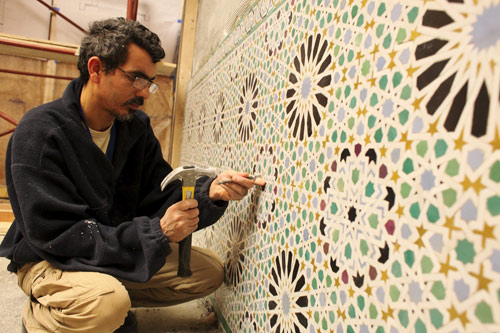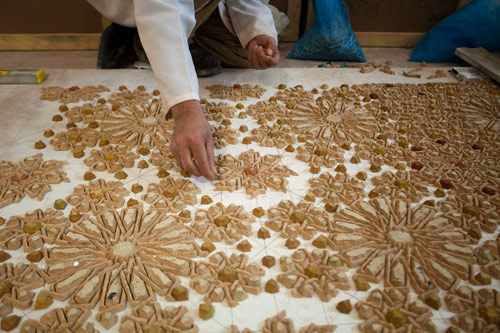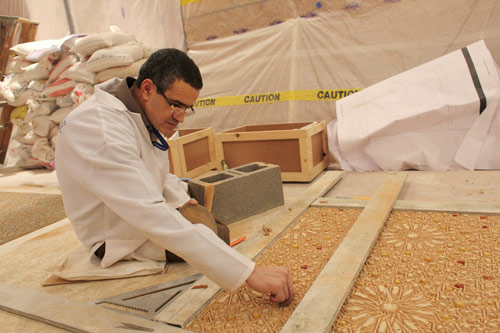 Traveling Exhibitions
Traveling Exhibitions Traveling Works of Art
Traveling Works of Art Conservation Projects
Conservation Projects Excavations
Excavations Fellows
Fellows Exchanges & Collaborations
Exchanges & Collaborations Multiple Items
Multiple Items
The Met Around the World presents the Met’s work via the global scope of its collection and as it extends across the nation and the world through a variety of domestic and international initiatives and programs, including exhibitions, excavations, fellowships, professional exchanges, conservation projects, and traveling works of art.
The Met Around the World is designed and maintained by the Office of the Director.
Traveling
Exhibitions
The Met organizes large and small exhibitions that travel beyond the Museum's walls, extending our scholarship to institutions across the world. See our national and international traveling exhibition program from 2009 to the present.
Traveling
Works of Art
The Met lends works of art to exhibitions and institutions worldwide to expose its collection to the broadest possible audience. See our current national and international loans program.
Conservation
Projects
The preservation of works of art is a fundamental part of the Met's mission. Our work in this area includes treating works of art from other collections. See our national and international conservation activities from 2009 to the present.
Excavations
The Met has conducted excavations for over 100 years in direct partnership with source countries at some of the most important archaeological sites in the world. Today we continue this tradition in order to gain greater understanding of our ancient collections. See our national and international excavation program from the Met's founding to the present.
Fellows
The Met hosts students, scholars, and museum professionals so that they can learn from our staff and pursue independent research in the context of the Met's exceptional resources and facilities. See the activities of our current national and international fellows.
Exchanges & Collaborations
The Met's work takes many forms, from participation in exchange programs at partnering institutions and worldwide symposia to advising on a range of museum issues. These activities contribute to our commitment to advancing the work of the larger, global community of art museums. See our national and international exchange program and other collaborations from 2009 to the present.
 Moroccan craftsmen building a courtyard within the Met's new Galleries for the Art of the Arab Lands, Turkey, Iran, Central Asia, and Later South Asia, which opened on November 1.
Moroccan craftsmen building a courtyard within the Met's new Galleries for the Art of the Arab Lands, Turkey, Iran, Central Asia, and Later South Asia, which opened on November 1. The tiles are installed in the court, with their glazed fronts now visible.
The tiles are installed in the court, with their glazed fronts now visible. The individual tesserae of the court's tile dado are laid out upside down on the floor before being applied to the wall.
The individual tesserae of the court's tile dado are laid out upside down on the floor before being applied to the wall. The intricate geometric pattern of the court's tile work is carefully inspected.
The intricate geometric pattern of the court's tile work is carefully inspected.
Moroccan Court, Islamic Art Galleries, The Metropolitan Museum of Art
Morocco
December 2010–October 2011


